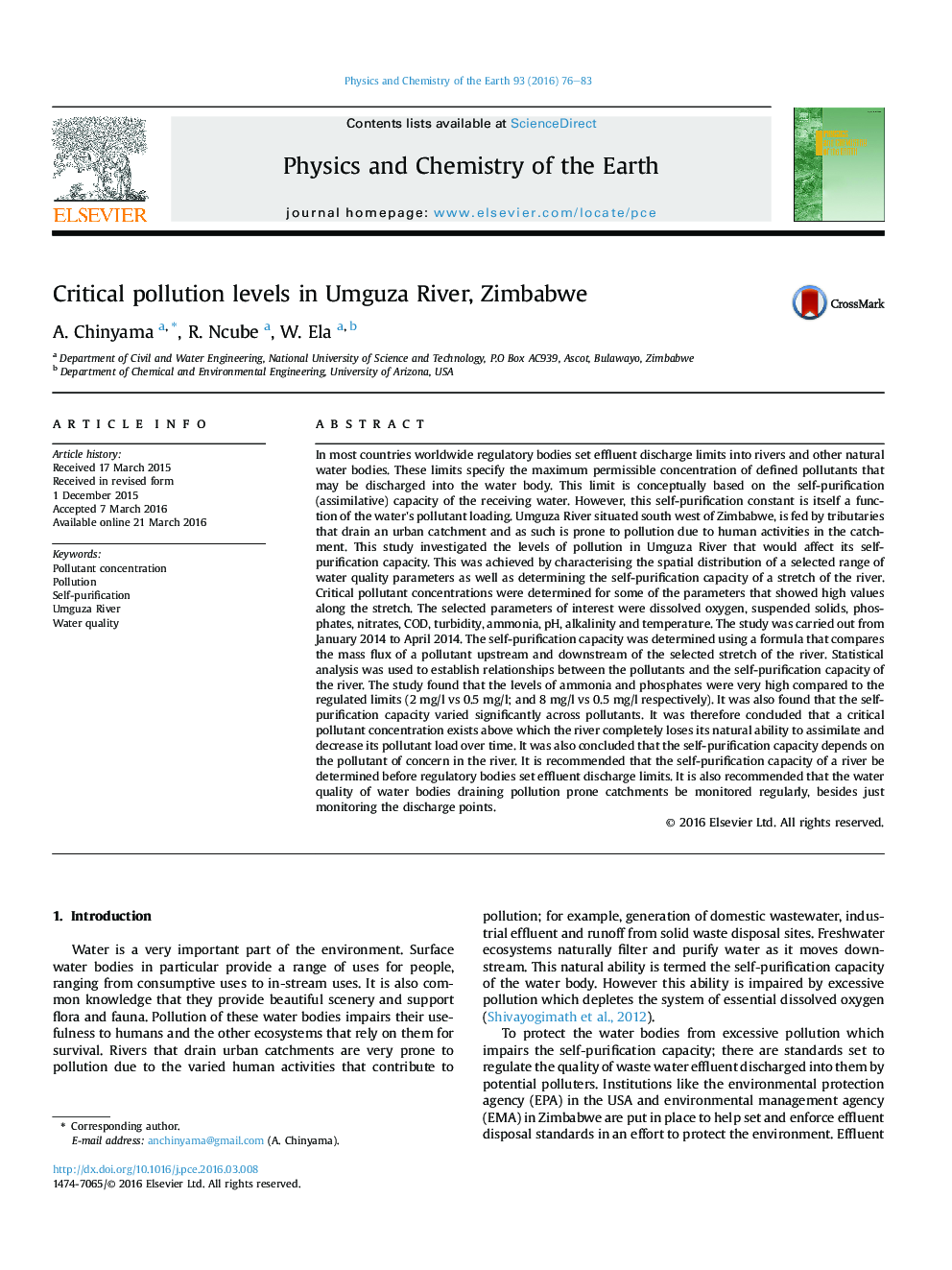| کد مقاله | کد نشریه | سال انتشار | مقاله انگلیسی | نسخه تمام متن |
|---|---|---|---|---|
| 4720805 | 1639345 | 2016 | 8 صفحه PDF | دانلود رایگان |
• Levels of pollution that would affect self-purification capacity investigated.
• Established relationships between pollutants and self-purification capacity.
• Ammonia and phosphates concentrations very high compared to the regulated limits.
• The self-purification capacity depends on the pollutant of concern in the river.
In most countries worldwide regulatory bodies set effluent discharge limits into rivers and other natural water bodies. These limits specify the maximum permissible concentration of defined pollutants that may be discharged into the water body. This limit is conceptually based on the self-purification (assimilative) capacity of the receiving water. However, this self-purification constant is itself a function of the water's pollutant loading. Umguza River situated south west of Zimbabwe, is fed by tributaries that drain an urban catchment and as such is prone to pollution due to human activities in the catchment. This study investigated the levels of pollution in Umguza River that would affect its self-purification capacity. This was achieved by characterising the spatial distribution of a selected range of water quality parameters as well as determining the self-purification capacity of a stretch of the river. Critical pollutant concentrations were determined for some of the parameters that showed high values along the stretch. The selected parameters of interest were dissolved oxygen, suspended solids, phosphates, nitrates, COD, turbidity, ammonia, pH, alkalinity and temperature. The study was carried out from January 2014 to April 2014. The self-purification capacity was determined using a formula that compares the mass flux of a pollutant upstream and downstream of the selected stretch of the river. Statistical analysis was used to establish relationships between the pollutants and the self-purification capacity of the river. The study found that the levels of ammonia and phosphates were very high compared to the regulated limits (2 mg/l vs 0.5 mg/l; and 8 mg/l vs 0.5 mg/l respectively). It was also found that the self-purification capacity varied significantly across pollutants. It was therefore concluded that a critical pollutant concentration exists above which the river completely loses its natural ability to assimilate and decrease its pollutant load over time. It was also concluded that the self-purification capacity depends on the pollutant of concern in the river. It is recommended that the self-purification capacity of a river be determined before regulatory bodies set effluent discharge limits. It is also recommended that the water quality of water bodies draining pollution prone catchments be monitored regularly, besides just monitoring the discharge points.
Journal: Physics and Chemistry of the Earth, Parts A/B/C - Volume 93, June 2016, Pages 76–83
